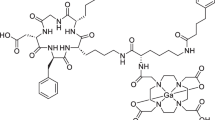Abstract
Liposomal formulations of anthracyclines have been developed to increase their delivery to solid tumors while reducing toxicity in normal tissues. DaunoXome (DNX, NeXstar) is a liposomal-encapsulated preparation of daunorubicin registered for treatment of Kaposi's sarcoma that during prior in vitro studies showed a toxicity to leukemic cells at least comparable to that of free daunorubicin. The aim of our study was to determine DNX pharmacokinetics in 11 poor-risk patients with acute leukemia treated with DNX 60 mg/m2 IV on days 1, 3, and 5. Blood and urine samples were collected at appropriate intervals after each of the three DNX administrations. The total amount of daunorubicin (free and entrapped) (t-DNR) and of its metabolite daunorubicinol (DNRol) was assayed by HPLC. The main pharmacokinetic parameters (t1/2α 4.54 ± 0.87 h; Vdss 2.88 ± 0.93 l/m2; Cl 0.47 ± 0.26 l/h/m2) showed that in patients with acute leukemia liposomal-entrapped daunorubicin pharmacokinetics greatly differed from that observed for the conventional formulation. In fact, DNX produced mean plasma AUC levels (t-DNR AUC0–∞ 456.27 ± 182.64 μg/ml/h) about 100- to 200-fold greater than those reported for the free drug at comparable doses due to a very much lower total body clearance. Volume of distribution at steady state was 200- to 500-fold lower than for the free drug. Plasma AUC of DNRol (17.62 ± 7.13 μg/ml · h) was similar to or even greater than that observed with free daunorubicin for comparable doses. Cumulative urinary excretion showed that about 6% and 12% of the total dose of DNX administered was excreted in urine as daunorubicin and daunorubicinol, respectively. No major toxicity was encountered. Therefore, pharmacokinetic characteristics suggest that DNX may be more convenient than free daunorubicin in the treatment of acute leukemia. In fact, liposomal formulation may allow a reduction of daunorubicin captation in normal tissues, thus minimizing toxicity at least for the parent drug, and guarantee an unimpeded access to leukemic cells in the bloodstream and bone marrow, thus theoretically improving efficacy.
Similar content being viewed by others
Author information
Authors and Affiliations
Additional information
Received: 17 March 2000 / Accepted: 25 May 2000
Rights and permissions
About this article
Cite this article
Pea, F., Russo, D., Michieli, M. et al. Liposomal daunorubicin plasmatic and renal disposition in patients with acute leukemia. Cancer Chemother Pharmacol 46, 279–286 (2000). https://doi.org/10.1007/s002800000163
Issue Date:
DOI: https://doi.org/10.1007/s002800000163




